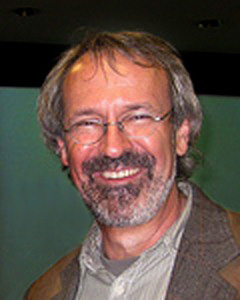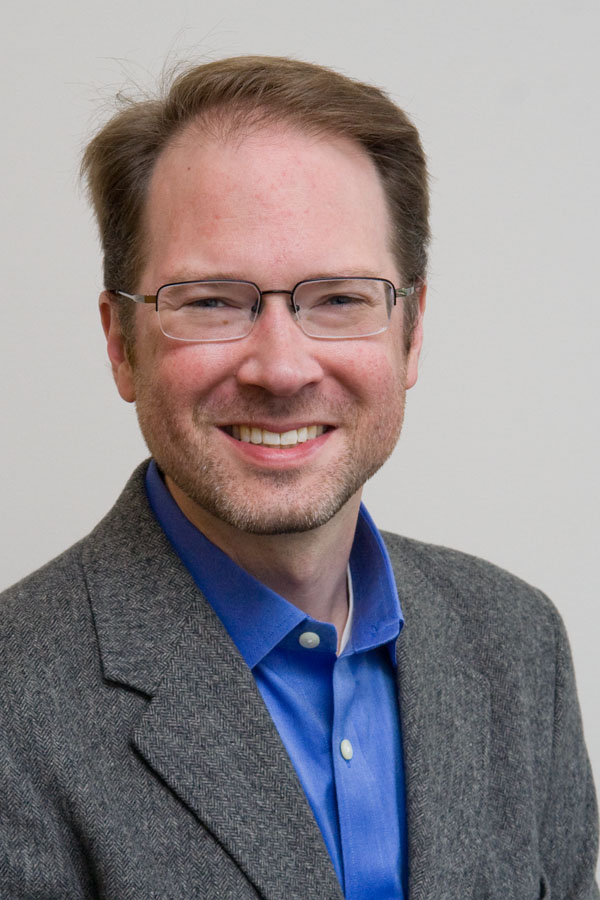Catalysis
Core Faculty
 |
David CokerArea: Quantum dynamics and statistical mechanicsThe Coker Group develops semi-empirical methods to compute electronic excited state potential energy surfaces for many-body systems, as well as mixed quantum-classical and semi-classical molecular dynamics methods which allow for electronic transitions. These methodologies are combined to study photo-dissociation dynamics in liquids, solids and clusters, charge transfer reactions in different environments, and how electronic states and electronic relaxation dynamics are influenced by solvent. |
 |
Eric CuenyArea: Organometallic Chemistry and CatalysisThe Cueny Group combines interests in organometallic chemistry, catalysis, and sustainability. The goal of our research is the development of new catalytic approaches to utilize waste products of society (such as CO2 and/or waste plastic) as starting materials in the synthesis of fuels, commodity chemicals, and new materials. We are interested in both the synthesis of novel organometallic complexes to perform these challenging chemical transformations as well as the detailed kinetic and mechanistic investigation of these catalytic reactions. We will leverage cooperative catalytic strategies to achieve higher activity and selectivity in the proposed catalytic transformations. The cooperative catalytic strategies we are targeting include transmetallation chemistry, metal-ligand cooperativity, and bimetallic complexes. |
 |
Joseph DerosaArea: Transition Metal Catalysis and Organic ElectrosynthesisThe Derosa Lab focuses on challenges and opportunities in transition metal catalysis and organic synthesis, with a particular interest in (electro)catalyst development. The overarching theme is redox-controlled catalysis, where judicious tuning of the catalyst and applied electrochemical potential unlocks new reactivity. These projects will involve interdisciplinary, yet complementary, areas of research; along with extensive training in organic synthesis and methods development at its core, students will gain mastery in inorganic and organometallic chemistry as well as electroanalytical techniques. Moreover, the catalytic manifolds developed in will have direct application across a wide range of subdisciplines, offering rich collaborative opportunities in diverse areas of research. This offers exciting opportunities for translational research in medicinal and process chemistry. |
 |
Linda DoerrerArea: 1D Materials from Coordination Chemistry Building BlocksThe Doerrer Group is synthesizing new compounds that have the potential to be one dimensional (1D) electronic conductors. Their goal is to use transition-metal based building blocks to assemble anisotropic systems whose combination will result in stable, processable materials with substantial charge transport. These materials are of great interest for answering fundamental questions about 1D charge transport and have tremendous potential in nano-scale electronics as nanowires. |
 |
Sean ElliottArea: Bioinorganic chemistry and metallobiochemistryThe Elliott Group uses Protein film voltammetry (PFV) to explore the electron transfer pathways and redox-dependent catalytic chemistry of complex metalloproteins such as sulfite reductase and multicopper oxidases. They also develop proteomic tools to enable probing the ‘metallome’ — a complete read-out of the metal-binding components of biological pathways. These experiments provide insights into the role of metal ions in biological chemistry. |
 |
John PorcoArea: Chemical Synthesis of Complex Molecules for Translational ScienceThe Porco laboratory is developing novel synthetic methodologies for concise entry to bioactive complex molecules. In a main area of interest, biomimetic approaches to natural products are being pursued as a means to formulate biosynthetic hypotheses and invent new synthetic methodology to important synthetic targets. As part of our studies, we have taken opportunities to address key questions and contemporary needs in organic chemistry including asymmetric catalysis of photocycloadditions, enantioselective dearomatization, and atropselective synthesis. Our laboratory also has a growing interest in translational collaborations with biological investigators to identify bioactive molecules, the latter done in conjunction with the BU-CMD. |
 |
Björn ReinhardArea: Biophysical, physical, nano-bio, and materials chemistryThe Reinhard Group develops and characterizes functional nanomaterials. One area of interest is the development of biomimetic nanomaterials that can reconstitute functionalities of viruses for applications in drug delivery and therapeutics. A particular focus is on elucidating the fundamental mechanisms that determine the interactions between nanoparticles and cellular systems. A second area of interest is broadly in the area of photonic and plasmonic nanomaterials. These materials have unique properties that enable new and advanced sensing, imaging, and photocatalyis concepts. To implement these advancements, nanomaterials design and fabrication go along with the development of new spectroscopy and imaging technologies. |